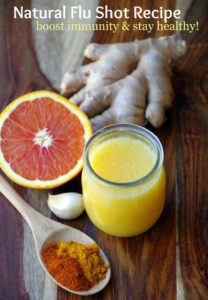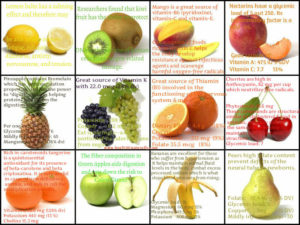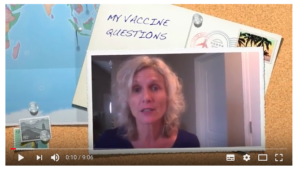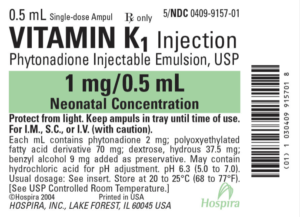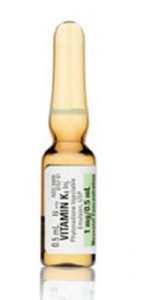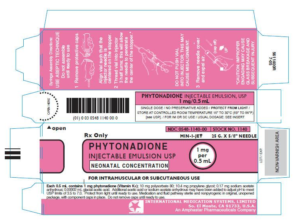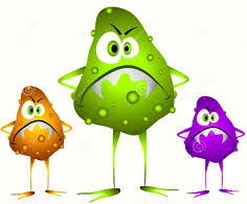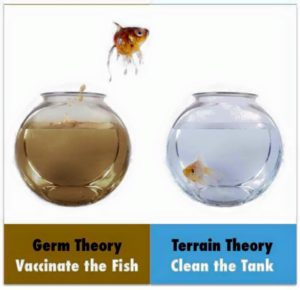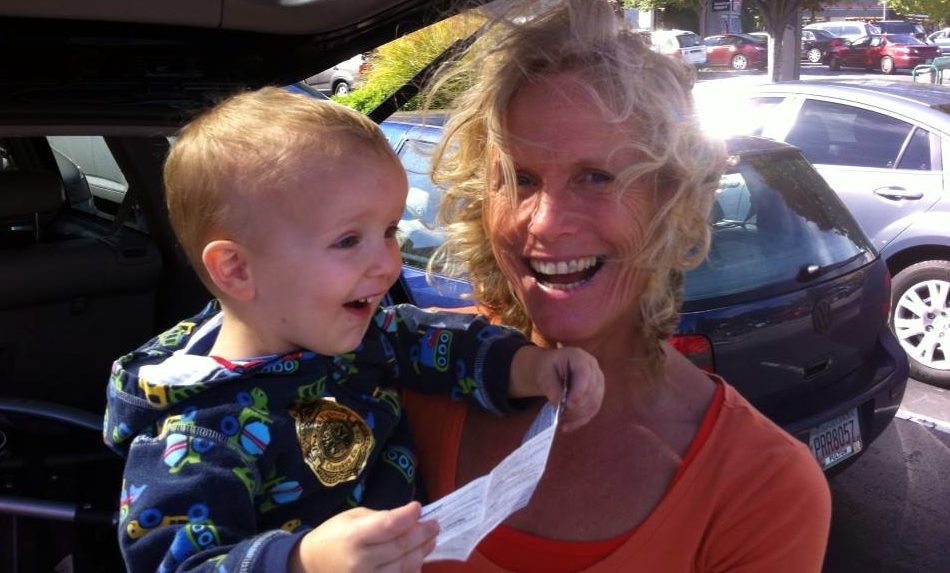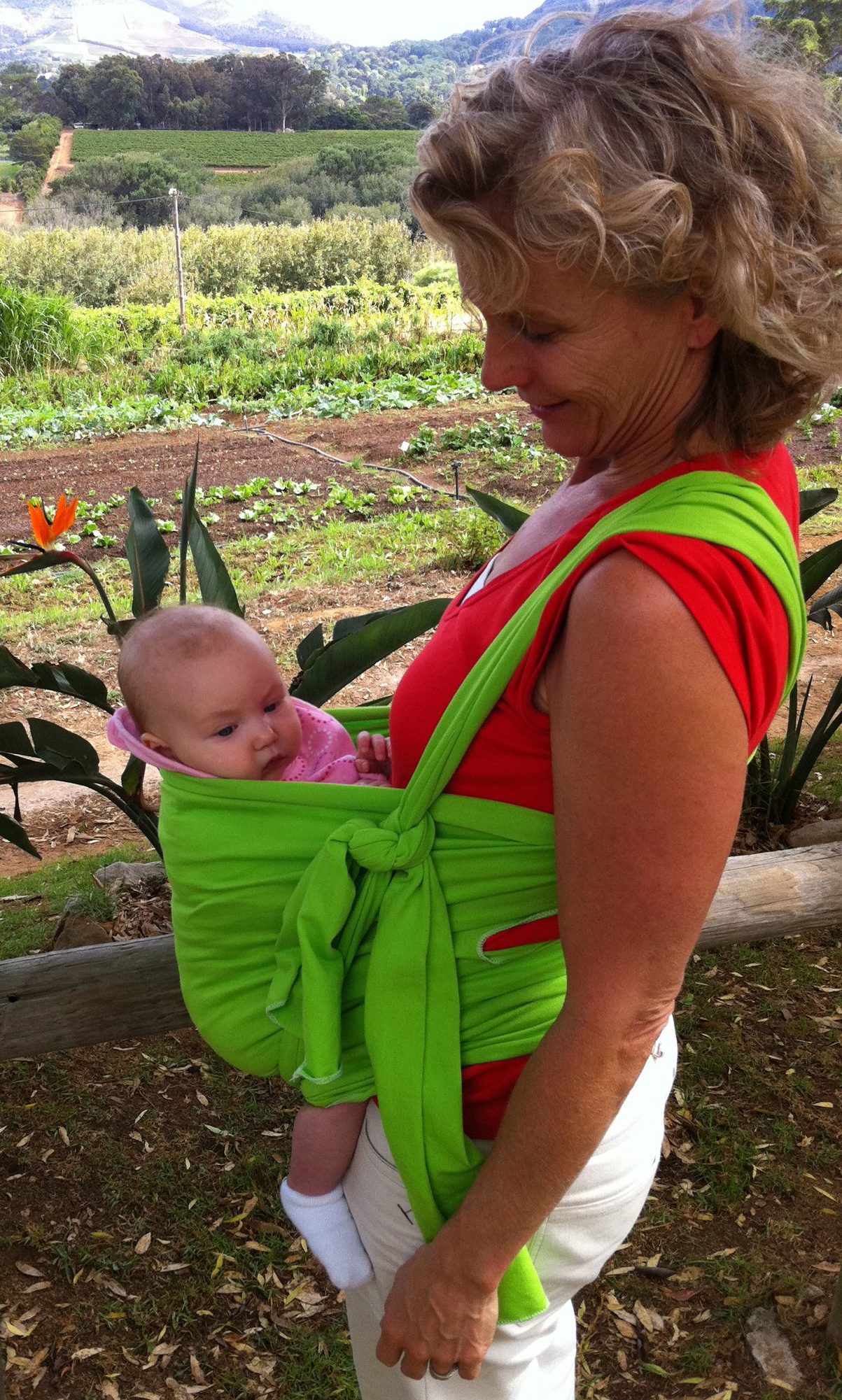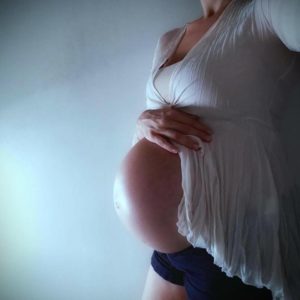It was the high incidence of diabetes from the HiB vaccine which banned the shot forever from Finland. In the USA 4 doses are recommended for babies. And what is the incidence of childhood diabetes in the US in the last 15 years?
http://www.ncbi.nlm.nih.gov/pmc/articles/PMC1116914/
http://www.ncbi.nlm.nih.gov/pubmed/12911277
http://www.ncbi.nlm.nih.gov/pubmed/25598306
http://www.whale.to/v/four_infant.html
http://www.whale.to/m/hib23.html
An Australian National Health and Medical Council information sheet on HIB vaccine advises that HIB meningitis can cause brain damage with later learning difficulties and behavioral disorders (www.health.gov.au).
Fungal meningitis is not contagious.
Parasitic meningitis is not contagious.
Non-infectious meningitis is not contagious.
Viral meningitis. The enteroviruses that cause viral meningitis can spread through direct contact with saliva, nasal mucus, or feces. They easily spread through coughing and sneezing but you are unlikely to develop meningitis as a complication.
Bacterial meningitis is contagious but is less contagious than the germs that spread cold and flu. Meningococcal bacteria can’t survive outside the body for long, so you are unlikely to get it from being near someone who has it.
Frederick R. Klenner, M.D. of North Carolina has seen cures of diphtheria, staph and strep infections, herpes, mumps, spinal meningitis, mononucleosis, shock, viral hepatitis, arthritis and polio using high doses of vitamin C (Journal of Preventive Medicine, Spring, 1974).
Dr Cathcart http://www.orthomed.com
“This disease is made more deadly because of the “acute induced scurvy” involved. This means that intravenous sodium ascorbate and later bowel tolerance oral doses of ascorbic acid should be administered along with the appropriate antibiotic. Not only does the ascorbate broaden the spectrum of activity of the antibiotics against bacteria and works synergistically with the antibiotic, but it avoids allergic reactions to the antibiotic. The susceptibility of sick people to allergic reactions is because of the up-regulation of the immune system while you are sick. This up-regulation is caused by free radicals. If the free radicals are neutralized by massive doses of ascorbate, the immune system, as far as allergic reactions are concerned, is down-regulated so that allergic reactions to the antibiotics do not occur. However, unlike steroids that universally down-regulate the immune system, ascorbate up-regulates the ability of white cells to kill viruses and bacteria……The incidence of meningitis “surges” after the flu because the acute induced scurvy induced by the flu decreases the ability of the body to fight off the meningitis bacteria.”
A miraculous story of healing using high doses of vitamin C by Dr Kalokerinos MD: “The matron was convinced that the diagnosis was meningitis so she prepared a lumbar puncture. I had however, seen this problem before. Lumbar punctures performed by me had been negative and the infants died… the trauma of inserting a needle… might result in a hemorrhage that might cause spinal cord paralysis. So I decided to give an injection of vitamin C… I probably gave as many as 6 injections, each 100mg. After half an hour Mary was normal. It was hard to believe, but I had performed a miracle! …I found that any viral infection, including measles and hepatitis, could be dramatically ‘cured’ by administering Vitamin C intravenously in big doses–provided that treatment was commenced early.”— (Medical Pioneer of the 20th century p175)
“Meningitis is not a transmissible disease, we do not “catch” it from one another. My first lesson in vaccine propaganda is when I learned, back in the forties, that the “epidemics” of meningitis amongst military recruits were not epidemics but clusters, and the second thing I learned was that only the freshly vaccinated recruits “caught” meningitis. The mess sergeant didn’t, the drill sergeant didn’t, only the recruits did. Not even the girls who worked at the base exchanges and service clubs, with whom the recruits played kissy face “caught” meningitis – only the freshly vaccinated recruits “caught” it…….In over thirty years of clinical practice I have never seen an infectious hepatitis “caught” by another member of a household and believe me when I say I really looked high and low for one of those. If I found one I would look for a source of the poisoning, not for a germ or a virus”—Daniel H Duffy Sr. DC
Cases of meningitis and septicemia have fallen from about 4,000 a year in the late 1990s to 2,446 last year following the introduction of a vaccine against meningitis C in November 1999. But in a bizarre twist the number of deaths rose last year by 17 per cent from 317 to 370 and is not far below the level before the vaccine was introduced. [Media September 20, 2004] Meningitis vaccinations ‘blamed’ for rise in deaths
“When I was in high school, my parents had me vaccinated for meningitis. Following my meningitis vaccination, I ended up in the hospital with a major infection that attacked every area of my system. My parents told me that for the first two days that I was hospitalized I did not even recognize them. The doctors performed a lumbar puncture on me. This procedure involved freezing my mid-section so the doctors could insert a large needle into the pit of my spinal cord to withdraw fluid for testing. Their diagnosis was meningitis. I remained hospitalized for three weeks. They did not want to even consider that my meningitis vaccination could have caused my nearly fatal disease.” Vaccine Safety Manual by Neil Z. Miller. (p.337)
“When notifications of meningitis (from MMR vaccine) from physicians were included; when the vaccine records of hospital cases of meningitis were included; when cross linkage of vaccine records from laboratory reports (4 laboratories) was performed and included the figure was increased to 1 in 11,000. It should be noted that in the case of one particular laboratory, this was 1 in 4,000. “—– Paul Shattock and Dawn Savery, Autism Research Unit, University of Sunderland, Sunderland, UK
“When I heard about the 14 year old boy who died of group C meningitis I remember wondering how soon beforehand he had had his BCG vaccination (another vaccine with a ‘live’ organism).”—DrJayne L M Donegan
“Every time you hear of the tragic death of an infant, carried off in the first weeks of life by ‘viral meningitis’, you have the right to suspect that BCG is at work, even if the autopsy confirms a viral diagnosis. My wife lived through this tragedy in a major Swiss hospital where she worked. The autopsy of the child revealed the tubercular nature of the ‘viral’ meningitis following a BCG inoculation, but all the assistants and nurses had received very clear instructions to say nothing or risk terrible consequences. As with all secret societies, the law of silence is absolute among doctors!”–Dr Jean Elmiger (Rediscovering Real Medicine ISBN 1862041997)
“The use of HIB vaccines has displaced haemophillus as a cause of disease and death, but other organisms like the far more serious, and more untreatable pneumococcus or other bacterial meningitis types have risen to take the place of HIB as causes of meningitis.”—Hilary Butler
“In Minnesota, a state epidemiologist concluded that the HIB vaccine increases the risk of illness when a study revealed that vaccinated children were *five times* more likely to contract meningitis than unvaccinated children.” http://www.mercola.com/2001/aug/18/vaccine_myths2.htm
“HIB is not a disease but a type of bacteria—defined by lab test….so hard to see if there is any disease decline…….Primary motive was to combat “invasive bacterial infections”, but no evidence this has been achieved. 3 major types of “ibis”–HIB, pneumococcal, and meningococcal. ..decline in HIB infections appears to have been accompanied by an increase in the other two…. there appears to be no evidence of a decrease in invasive bacterial disease overall…. in Australia notifications of meningococcal disease in 1995 was highest since 1979…this rise occurred in parallel with the fall in HIB disease, so what savings in illness have there been?….so, there seems to be no demonstrable savings in illness in children, on top of this there seems to be an association between DPT vaccine and invasive HIB disease.”–Greg Beattie
“The Government was last night accused of a cover-up over the safety of its mass meningitis immunization programme after The Observer obtained confidential documents that show at least 11 people have died after injections to prevent the disease.”–Media Aug 2000
“Classen’s data and other published data indicates the following vaccines are associated with an increased risk of diabetes (increased risk): hepatitis B (50%), hemophilus (25%), tetanus (20%), diphtheria (9%), pertussis (25%), mumps- rubella (23%). These findings are supported by a case control study performed in Europe. The cumulative effect of all these vaccines on diabetes is tremendous.”–PRNewswire
“I have published many articles linking vaccines and diabetes. In one study, a clinical trial on the hemophilus vaccine, I showed that the risk of the vaccine exceeds the benefit. This is published by the British medical Journal.”–Bart Classen
“Four of the medical experts advising the Government on whether the new meningitis C vaccine is safe have links to one or more of the drug companies that produce it……Professor Janet Darbyshire, a member of the Government’s Committee on Safety of Medicines, had received support for academic research from US firms Wyeth and Chiron, who produce the two main meningitis products being used on children in Britain….three members of the Joint Committee on Vaccination and Immunisation had declared interests in vaccine manufacturers…Dr David Goldblatt of the Institute of Child Health, has served on an expert advisory panel for Wyeth and received research grants from Wyeth and North American Vaccines, which produces a third meningitis C drug to be introduced this year. Another, Professor Keith Cartwright of the University of Bristol, received funding from the drug industry to ‘evaluate candidate meningicoccal vaccines’. “–Martin Bright and Tracy McVeigh, Sunday Observer, UK September 3, 2000
The aim of this retrospective study was to evaluate the incidence and the characteristics of spontaneously reported aseptic meningitis (AM) in France following mumps vaccination with monovalent or multivalent vaccines containing the Urabe strain. Fifty-four cases of AM were reported to the regional drug surveillance centres or to the manufacturer from the time each vaccine was launched up until June 1992. Twenty cases were associated with the time off administration of a monovalent mumps vaccine and 34 with a trivalent measles, mumps and rubella vaccine (MMR). A mumps virus was isolated in four cases in the cerebrospinal fluid and an Urabe-like strain was characterised twice by polymerase chain reaction (PCR).
A probable mumps origin was assumed in 17 other cases where the patients presented with other clinical or biological signs of mumps infection. The clinical outcome of AM was always favourable. The global incidence of mumps vaccine-associated AM was 0.82/100,000 doses, which is significantly lower than the incidence in the unvaccinated population. Even considering that the actual incidence of AM is much higher when assessed by active surveillance studies, the risk/benefit ratio of mumps vaccine remains in favour of vaccination. The incidence of mumps vaccines containing Jeryl Lynn (ROR Vax et Imu ORR) associated with AM needs to be evaluated. PMID: 9164005, UI: 97306738. https://www.ncbi.nlm.nih.gov/pubmed/9164005
Saturday, March 5, 2011 The Japan Times
Four infant deaths trigger vaccines halt
Kyodo News
The health ministry has decided to suspend the use of two types of publicly subsidized vaccines following the deaths of four children.
Municipal governments were notified of the decision.
The two types are the HIB vaccine, which prevents bacterial meningitis, and a vaccine against streptococcus pneumonia.
The four children were a 3-month-old girl in Kawasaki who died Feb. 20, a 2-year-old boy in Takarazuka, Hyogo Prefecture, who died Tuesday, a 1-year-old girl in Nishinomiya, also in Hyogo, who died Wednesday, and a 6-month-old girl in the city of Kyoto who died Friday.
… All four children were administered a vaccine against streptococcus pneumonia made by Pfizer Inc., and all except the girl in Nishinomiya received ActHIB, an HIB vaccine made by Sanofi Pasteur Inc.
In addition, all except the boy in Takarazuka received a mixed vaccine against diphtheria, whooping cough and tetanus on the same day they received other vaccines.
The streptococcus pneumonia vaccine has been administered to an estimated 1.10 million people in 2.15 million doses since it went on sale in February 2010. The HIB vaccine has been administered to an estimated 1.55 million people in 3.08 million doses since its launch in December 2008.
Japan, known for being notoriously slow to accept new vaccines, approved the HIB vaccine in 2007, 20 years after the United States did so. Approval for the streptococcus pneumonia vaccine came in 2009, compared with 2000 in the U.S.
https://www.japantimes.co.jp/news/2011/03/06/national/four-infant-deaths-trigger-vaccines-halt/#.WfPa9EyZORs
[1999] HIB VACCINE MAY CAUSE JUVENILE DIABETES
by What Doctors Don’t Tell You (Volume 10, Issue 9)
Children who receive multiple doses of the Haemophilus influenzae b (HIB) vaccine are at increased risk of developing type I juvenile-onset diabetes, according to new American research.
When researchers in Baltimore compared children who had received four, one and no doses of the vaccine, the cumulative incidence of diabetes per 100,000 in the three groups was 261, 237 and 207 at age 7 and 398, 376 and 340 at age 10, respectively. This works out to be that the greatest increased risk is among children who receive the full quotient of the vaccine.
The incidence of diabetes among US children aged five to 10 had been stable in the 10 years prior the introduction of the vaccine.
The increased risk of diabetes – which is just one of the potential adverse effects of the HIB jab – certainly exceeds the benefits of the vaccine, say the Baltimore research team. The HIB vaccine has been estimated to prevent approximately seven deaths, and between seven and 26 cases of severe disability per 100,000 children who have been immunised (BMJ, 1999; 319: 1133).
* In another study, scientists have found that the routine vaccination of newborns with the hepatitis B vaccine increases the risk of fever (Arch Dis Child, Fetal and Neonatal Edition, 1999; 81: F206-7). A before-and-after study showed a link between the launch of the vaccination programme in Israel and the number of babies with unexplained fever in the first three days of life. As yet, the scientists do not know what significance this finding has for the short- or long-term health of the infants.
Can HIB Vaccine Cause Asthma?
by Heidi White
Can the Haemophilus influenzae type b (HIB) vaccine cause asthma or allergy? I am not aware of any human studies that have specifically looked at the effect of HIB vaccine on asthma. However, a Swiss study1 found that invasive HIB infection (epiglottitis) could possibly be linked to an increase in the rate of asthma and allergies (OR 4.8). There may be a few explanations for this. Firstly, the treatment of a HIB infection with antibiotics, such as cephalosporins (eg cefotaxime or ceftriaxone), may by itself increase the risk of asthma.2 And secondly, cell wall components from the HIB bacteria may also be a cause of asthma.
If invasive HIB infection is able to cause asthma then it may also be possible that the HIB vaccine could also have a similar effect. Animal studies have provided various mechanisms for why this could occur:
a) A nasal HIB vaccine has been shown to stimulate Th1 and Th2 cells in mice.3 If the Th2 side of the immune system is over stimulated, then this can increase the risk of asthma and allergy.
b) HIB vaccination in rats has been shown to enhance histamine levels with a corresponding increase in the number of eosinophils.4-7 Eosinophils (white blood cells, used to fight infection) will proliferate and accumulate in the airways under stimulation by interleukin-5 (IL-5), a cytokine produced by Th2 cells. Eosinophil accumulation is also evident in the dermis of the skin seen in people with atopic dermatitis (eczema).
c) HIB vaccination in rats has been shown to cause increased bronchoconstriction in response to histamine, possibly due to an increased reactivity of the para-sympathetic/cholinergic pathways.7,8
d) Studies in guinea-pigs have shown that HIB vaccination may impair the beta (b ) 2-adrenergic system by causing a blocking or desensitization of b 2 receptors, or by reducing the number of b 2 receptors in the lung.9-13 Inhibition of b receptors can lead to increased bronchoconstriction. It is thought that the polysaccharide component of the bacterial cell wall may be responsible for this effect.14 HibTitre vaccine contains purified polysaccharide (PRP), from the capsule of the HIB bacteria, which is linked to a diphtheria carrier protein. PedvaxHIB vaccine contains PRP linked to a meningococcal protein.
It would be interesting to see the results of a human study that specifically examines the effects of HIB vaccine on the incidence of asthma and allergy.
Heidi White
Hospital Pharmacist
September, 1999.
REFERENCES:
1. Muhlemann K et al. Risk factors for invasive Haemophilus influenzae disease among children 2-16 years of age in the vaccine era, Switzerland 1991-1993. The Swiss H. Influenzae Study Group. Int J Epidemiol 1996 Dec;25(6):1280-5
2. Farooqi IS, Hopkin MH. Early childhood infection and atopic disorder. Thorax 1998 November; 53: 927-932
3. Kurono Y et al. Nasal immunization induces Haemophilus influenzae-specific Th1 and Th2 responses with mucosal IgA and systemic IgG antibodies for protective immunity. J Infect Dis 1999 Jul;180(1):122-32
4. Nijkamp FP et al. Facilitation of histamine release in the Haemophilus influenzae vaccinated experimental animal. Br J Pharmacol. 1980 Jan; 68(1):147P
5. Raaijmakers JA, Terpstra GK, Kreukniet J. Mast cells as a possible source of Haemophilus influenzae-induced changes in plasma and lung histamine levels. Int Arch Allergy Appl Immunol 1980;61(3):352-7
6. Terpstra GK, Raaijmakers JA; Kreukniet J. Comparison of vaccination of mice and rats with Haemophilus influenzae and Bordetella pertussis as models of atopy. Clin Exp Pharmacol Physiol 1979 Mar-Apr;6(2):139-49
7. Terpstra GK et al. Effects of Haemophilus influenzae vaccination on the (para-)sympathic- cyclic nucleotide-histamine axis in rats. Ann Allergy 1979 Jan; 42(1):36-40
8. Schreurs AJ, Nijkamp FP. Bronchial hyper-reactivity to histamine induced by Haemophilus influenzae vaccination. Agents Actions 1984 Oct; 15(3-4): 211-5
9. Terpstra GK, Kreukniet J, Raaijmakers JA. Changes in beta-adrenergic responses as a consequence of infection with micro-organisms. Eur J Respir Dis Suppl 1984;135:34-46
10. Schreurs AJ, Terpstra GK et al. The effects of Haemophilus influenzae vaccination on anaphylactic mediator release and isoprenaline-induced inhibition of mediator release. Eur J Pharmacol 1980 Apr 4;62(4):261-8
11. Schreurs AJ, Versteeg DH, Nijkamp FP. Involvement of catecholamines in Haemophilus influenzae induced decrease of beta-adrenoceptor function. Naunyn Schmiedebergs Arch Pharmacol 1982 Sep; 320(3):235-9
12. Schreurs AJ, Terpstra GK, Raaijmakers JA, Nijkamp FP. Effects of vaccination with Haemophilus influenzae on adrenoceptor function of tracheal and parenchymal strips. J Pharmacol Exp Ther 1980 Dec;215(3):691-6
13. Nijkamp FP et al. Inhibition of effects of isoprenaline and adrenaline by Haemophilus influenzae vaccination. Br J Pharmacol. 1980 Jan; 68(1):146P.
14. Schreurs AJ, Verhoef J, Nijkamp FP. Bacterial cell wall components decrease the number of guinea-pig lung beta-adrenoceptors. Eur J Pharmacol 1983 Jan 28; 87(1):127-32
Beware of HIB vaccine
by Dr Robert Mendelsohn MD
Just as with the older vaccines, the best advice I can give parents is to carefully read the prescribing information before permitting the doctor to use this new Hemophilus influenza b vaccine.
You then will learn that, in addition to the active agent or germ, the vaccine injection also contains lactose, thimerosal (a derivative of mercury) and sodium chloride. You might ask your doctor whether any studies have shown that the injection of these materials——sugar, mercury and salt——is safe. I know of none.
Be sure that your doctor has a second syringe available if he gives your child the shot. The prescribing information states that an epinephrine (adrenaline) injection should be available for immediate use if an anaphylactoid (shock—like) reaction should occur. Also, be sure he takes a careful history and performs a physical examination on your child, since any febrile illness (one that is accompanied by a fever) or active infection is reason to delay the vaccine.
If you decide to have the doctor inject the vaccine, watch that he injects it in the right place. The vaccine should be given under the skin (subcutaneously) and not intradermally (between the layers of the skin), intravenously or intramuscularly. The safety and efficacy of these other routes of administration have not been evaluated.
Where has the vaccine come from? Has it been sitting on a table or in a drawer? The prescribing information says the HIB vaccine should be refrigerated upon receipt and should be stored when not in use at 35 to 46 degrees Fahrenheit. Be sure the vaccine is taken out of the refrigerator and not out of the freezer, since the prescribing information carries the warning——DO NOT FREEZE.
If you can, determine when the doctor mixed the vial of vaccine with the vial of diluting fluid, since, after mixing, the vaccine is stable for only 30 days when stored as directed. The date of mixing (reconstitution) should be recorded on the label of the vial containing the vaccine. Look at the label before the shot is given to make sure the expiration date has not passed.
Since the HIB vaccine first was introduced a few years ago, I have been warning people about the tendency of doctors to use a new medicine as fast as they can before all the adverse effects are known. Now, the darker side of this new vaccine, designed to prevent children from getting meningitis, is beginning to surface.
In an article entitled, “Meningitis Risk Seen from Use of Vaccine” (St. Paul Pioneer Press Dispatch, April 21, 1987), Minnesota state epidemiologist Michael Osterholm reported that, instead of protecting children from meningitis, the HIB vaccine increases the risk of illness. Speaking to physicians and health experts from around the United States who were gathered at the National Institutes of Health, Osterholm reported that a study of children who had received the HIB vaccine since its introduction in 1985 showed they faced a fivefold increase in the risk that they will be infected by the Hemophilus influenza type b bacteria (against which the vaccine is supposed to protect them). This Minnesota study found the vaccine has an effective rate of minus 86 percent, meaning the number of infected children grew. In Minnesota, many doctors have stopped administering the vaccine until they get a definitive response from the FDA.
In contrast, the original study of children in Connecticut, Pittsburgh, and Dallas which was done by Dr. Eugene Shapiro of the Yale University School of Medicine, found the vaccine to be effective 89 percent of the time. The most startling revelation is that Shapiro excluded Minnesota from his study (even though that study used the same methodology) because the state’s results were so far out—of—line from the other areas examined. I hope every reader of this Newsletter, whether in the United States or in Canada, is aware of the almost uncontrollable tendency of researchers to throw out findings that don’t agree with their preconceived conclusions!
In view of this important news, every parent whose doctor recommends the HIB vaccine must ask the doctor if he knows what’s happening in Minnesota.
The authoritative Centers for Disease Control publication, Morbidity and Mortality Weekly Report, reported in its August 21, 1987 edition that invasive HIB disease was occurring in children who previously had been vaccinated with that immunizing agent.
When the vaccine was introduced in 1985, the FDA asked its manufacturers to conduct post—marketing studies. As a result, the FDA, CDC, vaccine manufacturers and individual vaccine investigators have received spontaneous reports of these vaccine failures.
The word “spontaneous” is important. It indicates that government agencies and vaccine manufacturers have depended on passive surveillance in their search for adverse effects. “Passive surveillance” is the epidemiological term used when there is only voluntary, spontaneous and therefore spotty reporting of adverse effects by patients and doctors to the government or drug companies. In contrast, “active surveillance” refers to a situation in which the company making the drug” or vaccine and the government’s health and watchdog agencies make an effort to check up on the patients to determine the extent of adverse effects.
For example, in active surveillance, a vaccine manufacturer or the FDA might keep a file card on each person who was given the vaccine during field trials. Then at some point——days, weeks, months or even years later—each vaccinee and his family would be contacted, examined and closely questioned to determine both the efficacy and safety of the vaccine.
As you can see, from the scientific standpoint, active surveillance is vastly superior to passive surveillance. However, not too unsurprisingly, vaccine manufacturers are quite resistant to the idea of active surveillance. They claim it is too expensive, too time—consuming, etc.
I often have felt that a more basic reason for opposition to active surveillance is vaccine manufacturers’ fears of what such a scientific study might turn up. But even with inadequate, slapdash and sloppy passive surveillance, bad news about the HIB vaccine has surfaced. Investigators at the Northern California Kaiser Permanente Health Plan and the Minnesota Department of Health have reported some cases of invasive HIB disease during the one—week period following vaccination.
Last year, one investigator suggested in the New England Journal of Medicine that these vaccine failures might be due “to an inability to induce an appropriate antibody response.” Translating this into English, the vaccine might not work.
The CDC says further investigation is necessary to evaluate the meaning of HIB cases found soon after vaccination. They warn that physicians should be aware that “cases may occur in the week after vaccination, prior to onset of the protective effects of the vaccine.”
I will not argue with the CDC that physicians should be aware of the vaccine failure. But just in case your physician does not have time to read this weekly government publication, I think it important that patients get the message directly.
Loss of speech after HIB vaccine
Letter WDDTY April 2001
in 1992, immediately following a then new vaccination against Haemophllus influenzae type b (HIB) infection, my two-year-old granddaughter became unresponsive and regressed until she lost all understanding and speech.
She was finally diagnosed with the extremely rare childhood disintegrative disorder Heller’s syndrome.
An Australian National Health and Medical Council information sheet on HIB vaccines advises that HIB meningitis can cause brain damage with later learning difficulties and behavioural disorders (www.health.gov.au).
On hearing of US reports of an elevated risk of HIB disease in the week following HIB vaccinations, I sought as much information as possible. Through the US Freedom of Information Act (as WDDTY suggested), I was able to obtain adverse reports for 1988—90, when the vaccine given to my granddaughter was first used in the US. The reports showed clustering of meningitis on day two following vaccination, with an unexpected involvement of the MMR vaccine.
There are 140 serious outcome reports, with 24 cases of meningitis. Five meningitis cases occurred on day two following vaccination and one on day four; nine are classed as ‘no drug effect’ and nine had undefined timing. The ‘no drug effect’ cases must be vaccine failures, occurring at least a month, but up to two and a half years, after vaccination.
If the five day-two meningitis cases represent ‘background’ disease, there should have been comparable reports for all seven days of the week following vaccination. It seems most unlikely that ‘background’ disease cases could be so concentrated on day two.
Seven of the 140 serious outcome children also received MMR vaccine, probably representing those who missed this shot at one year of age. Three of these seven children had day-two meningitis. It is most unlikely that the involvement of MMR in day-two meningitis is a chance occurrence.
If no one can say which brain damaging illness caused a particular child’s autistic regression, greatest suspicion must fall on the most common illness with features consistent with parents’ experiences.—BG, Canberra
Parents demand answers as children fall ill after meningitis jabs
(Western Daily Press, June 12, 2000)
Case 1
Father’s fears over tot’s reaction
TERRY Meredith’s daughter has never been an angel but the change in her behaviour since having the meningitis C vaccination has left him worried about the long-term effects.
Amy, who is almost three, has been acting differently since her injection two weeks ago.
“The day she had the jab she went absolutely loopy. It was like she was on Ecstasy or something,” he said.
“She is normally boisterous but she has been particularly bad since the injection. Her behaviour has deteriorated and she has been violent towards her mother and her 13-month-old sister Stacey. We have had to discipline her and tell her off more than ever before.”
Mr Meredith, who lives in Tidenham, near Chepstow, said friends had also reported strange behaviour among their children since the injections.
“One of our friends has a little boy and he has gone stubborn and is shouting and has been violent, he said.
“Two others have also said they have seen a marked change in their children’s behaviour since they had it.
“Amy has never been as good as gold, but since the day she had it she has been hyperactive,” he said.
“We all want to know whether any damage has been done, if it is temporary and whether something should be done about it.”
He said the family’s experience had put them off taking their children for any more injections.
Case 2
Black-outs ‘not treated seriously’
KEVIN and Nicola Hall say they are still waiting for an explanation of their daughter’s sudden illness.
In the weeks after her vaccination at Norton Hill School in Midsomer Norton, near Bath, Rebecca suffered ten blackouts, severe headaches and other symptoms.
The 12-year-old collapsed two hours after receiving her injection at the 1,250-pupil school on March 29.
She was taken to Royal United hospital and kept under observation for a night.
But since then she has collapsed at school on two other occasions and reported to the nurse seven times with headaches, dizziness and weakness.
She has also been sent home from school ten times and advised not to take part in PE lessons after collapsing on the playing field twice.
Mr Hall said he wanted to know if she had suffered any lasting damage.
“Before she had the vaccination she was fit and healthy but the doctor and paediatrician are treating it as if it is a migraine and giving her tablets,” he said.
“She has not had a history of migraines and there is no history of it in the family and from what we know her symptoms are not even the same.
“I don’t feel her case has been treated seriously. We certainly want the health authorities to be more aware of the side effects that some people are having.
“I am not in favour of the immunization programme being stopped but we don’t want these side effects being treated as if is just a migraine.”
http://www.wellwithin1.com/meningitisc.htm



